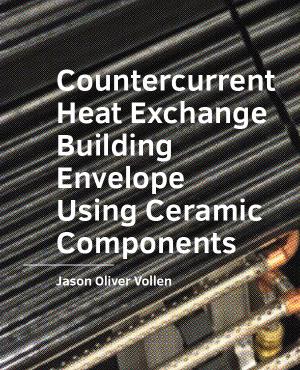Hosted by
Countercurrent Heat Exchange Building Envelope Using Ceramic Components
Synopsis
Research and development in building envelope design have promoted the convergence of two system types, Thermo-Active Building Systems and Adaptive Building Envelopes, that re- conceptualize the envelope as a distributed energy transfer function that captures, transforms, stores, and even re-distributes energy resources.
The widespread deployment of Thermo-Active Building Systems as a building envelope will depend on several factors. These factors include the value of the design attributes that impact energy transfer in relation to the performance of the building envelope assembly and the return on investment that these attributes individually or in the aggregate can provide as a reduction in Energy Use Intensity. The research focus is on the design development, testing, and energy reduction potential of a Thermo-Active Building System as an adaptive countercurrent energy exchange envelope system using ceramic components: the Thermal Adaptive Ceramic Envelope.

